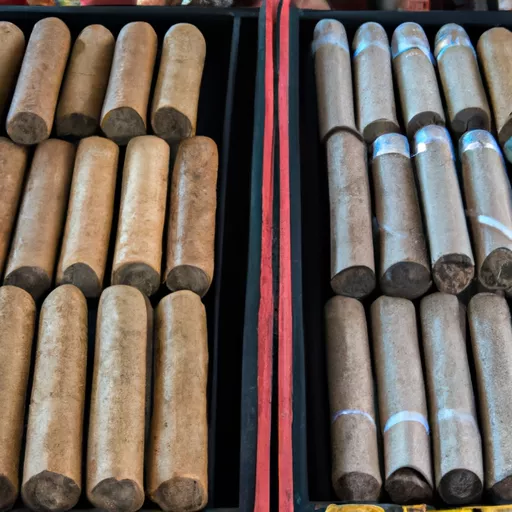
As a cigar enthusiast, I have always been intrigued by the world of little cigars. These small but mighty smokes have a unique charm that sets them apart from their larger counterparts. In this article, I will delve into the world of little cigars, covering everything from their history to their flavors and why they are becoming increasingly popular among cigar enthusiasts.
For those who are unfamiliar, little cigars are a smaller version of traditional cigars, typically around 3 inches in length with a thinner ring gauge. They are made using the same tobacco as regular cigars but with shorter filler leaves, giving them a milder flavor profile. Little cigars are also often machine-made, making them more affordable compared to hand-rolled cigars.
Little cigars have been around for centuries, with their roots tracing back to Europe in the 16th century. They were initially popular among working-class individuals who could not afford full-sized cigars. The demand for these smaller smokes increased during the industrial revolution, where workers needed a quick and convenient smoke break during their long shifts. However, it wasn’t until the 1970s that little cigars gained widespread popularity in the United States.
One of the main appeals of little cigars is their affordability. While traditional cigars can cost upwards of $10 each, little cigars usually range from $1 to $5 each, making them a budget-friendly option for those who want to enjoy a cigar without breaking the bank. Plus, their smaller size makes them perfect for a quick smoke break or for those who don’t have time to commit to a full-sized cigar.
Little cigars also come in a variety of flavors, making them a favorite among those who prefer a more flavored smoke. From classic flavors like vanilla and cherry to more unique ones like chocolate and coffee, there is a little cigar flavor for every palate. However, it is worth noting that the flavors in little cigars tend to be more subtle compared to flavored cigarettes, making them a preferred option for those who want a hint of flavor without it being overpowering.
Now, let’s talk about the different types of little cigars. There are two main categories of little cigars: filtered and unfiltered. Filtered little cigars have a small filter at the end, much like cigarettes, while unfiltered ones do not. The filter can reduce the harshness of the smoke, making it smoother and more enjoyable. However, some cigar enthusiasts argue that unfiltered little cigars have a bolder flavor, making them a preferred choice for those who enjoy a stronger smoke.
When it comes to smoking little cigars, the method is similar to that of traditional cigars. You can either clip the end of the cigar or use a cigar punch to create a hole. However, since little cigars are smaller, you may need to adjust your smoking technique to avoid burning your fingers. You can also either light the cigar with a lighter or toast the foot with a match, both of which will give you a smooth and even burn.
One of the main downsides of little cigars is that they tend to burn faster than traditional cigars, but this makes them perfect for those who want a quick smoking experience. The average burn time for a little cigar is around 10-15 minutes, making them a great option for a short break or when you want a smoke but don’t have much time.
Another distinguishing feature of little cigars is their packaging. Unlike traditional cigars that come in wooden boxes, little cigars often come in small, colorful packs that resemble cigarette packs. This makes them more discreet and convenient for those who want to carry them around without drawing too much attention.
Little cigars also come in a wide range of strengths, from mild to full-bodied. This is another factor that makes them popular among cigar enthusiasts, as you can find a little cigar that caters to your personal preference and smoking experience.
In recent years, little cigars have seen a surge in popularity, especially among younger smokers. This is partly due to the fact that they are more affordable and come in a range of flavors, making them a more attractive option for first-time cigar smokers. Additionally, the FDA’s regulation of traditional cigars has led to an increase in the production and availability of little cigars, making them easier to find in both convenience stores and cigar shops.
In conclusion, little cigars offer a unique and convenient smoking experience that is not found in traditional cigars. From their affordability to their wide range of flavors and strengths, there is something for every cigar enthusiast to enjoy. So the next time you want to try something new or have a quick smoke break, consider reaching for a little cigar, and you may just discover a new favorite smoke.